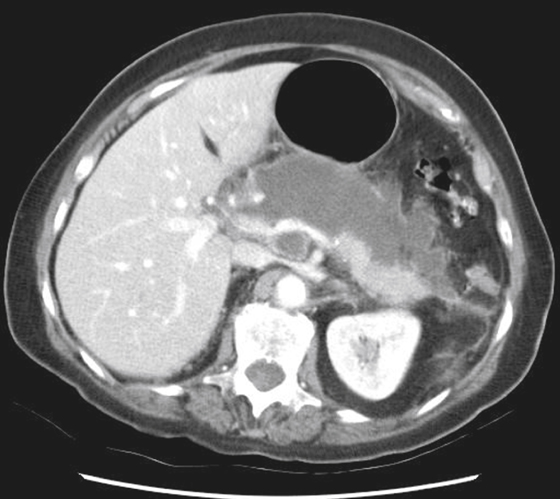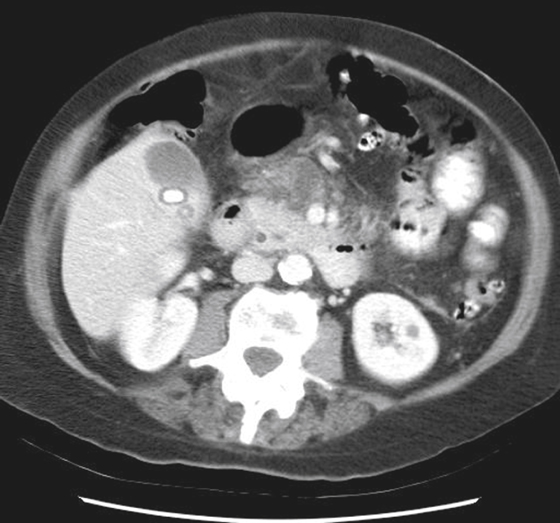

History: A 69-year-old woman with epigastric pain has now been in the hospital for 10 days.
1. Which of the following should be included in the differential diagnosis for this patient? (Choose all that apply.)
C. Pancreatic mucinous cystadenoma
D. Pancreatic serous cystadenoma
2. What is the most common cause of acute pancreatitis (in Western society)?
3. Which of the following signs on contrast-enhanced CT indicates pancreatic necrosis?
C. Lack of contrast enhancement of pancreatic parenchyma
D. Enlargement of pseudocyst with high-density content
4. All of the following are potential complications of severe acute pancreatitis except:
ANSWERS
CASE 19
Acute Pancreatitis
1. A, B, C, and E
2. A
3. C
4. D
References
Balthazar EJ, Ranson JHC, Naidich DP, et al: Acute pancreatitis: prognostic value of CT. Radiology. 1985;156:767–772.
Cross-Reference
Gastrointestinal Imaging: THE REQUISITES, 3rd ed, p 171-172.
Comment
Acute pancreatitis (see figures) is a serious condition whose frequency varies from country to country. The incidence has slowly declined in the United States since the turn of the 21st century. The disease is associated with a 10% to 15% mortality rate, is more common in the black population, and affects male more than female patients. Alcoholic pancreatitis is seen in younger adults, and biliary related etiologies are more commonly seen in an older population. Pancreatitis also results from trauma, drugs, and iatrogenic (endoscopic retrograde cholangiopancreatography [ERCP]) and idiopathic causes. These patients present with abdominal tenderness and guarding as well as fever and tachycardia.
In hemorrhagic pancreatitis both the Cullen sign (a bluish discoloration around the umbilicus) and the Grey Turner sign (discoloration along the flanks) may be seen as blood collects in the peritoneum and dissects along tissue planes. Associated with virtually every case of pancreatitis is some change at the left lung base. The change may be prominent or minimal, depending on the severity of the case. The inflammatory process in the right upper quadrant results in diminished diaphragmatic excursion on the left and hypoventilation of the left lung base, with resultant degrees of atelectasis, effusions, and air-space disease.
Passed gallstones lodged in the sphincter of Oddi is a common cause of pancreatitis (see figures). The size of the stone and duration of occlusion determine the severity of the pancreatitis. Approximately 5% of post-ERCP patients will develop some degree of pancreatitis.







